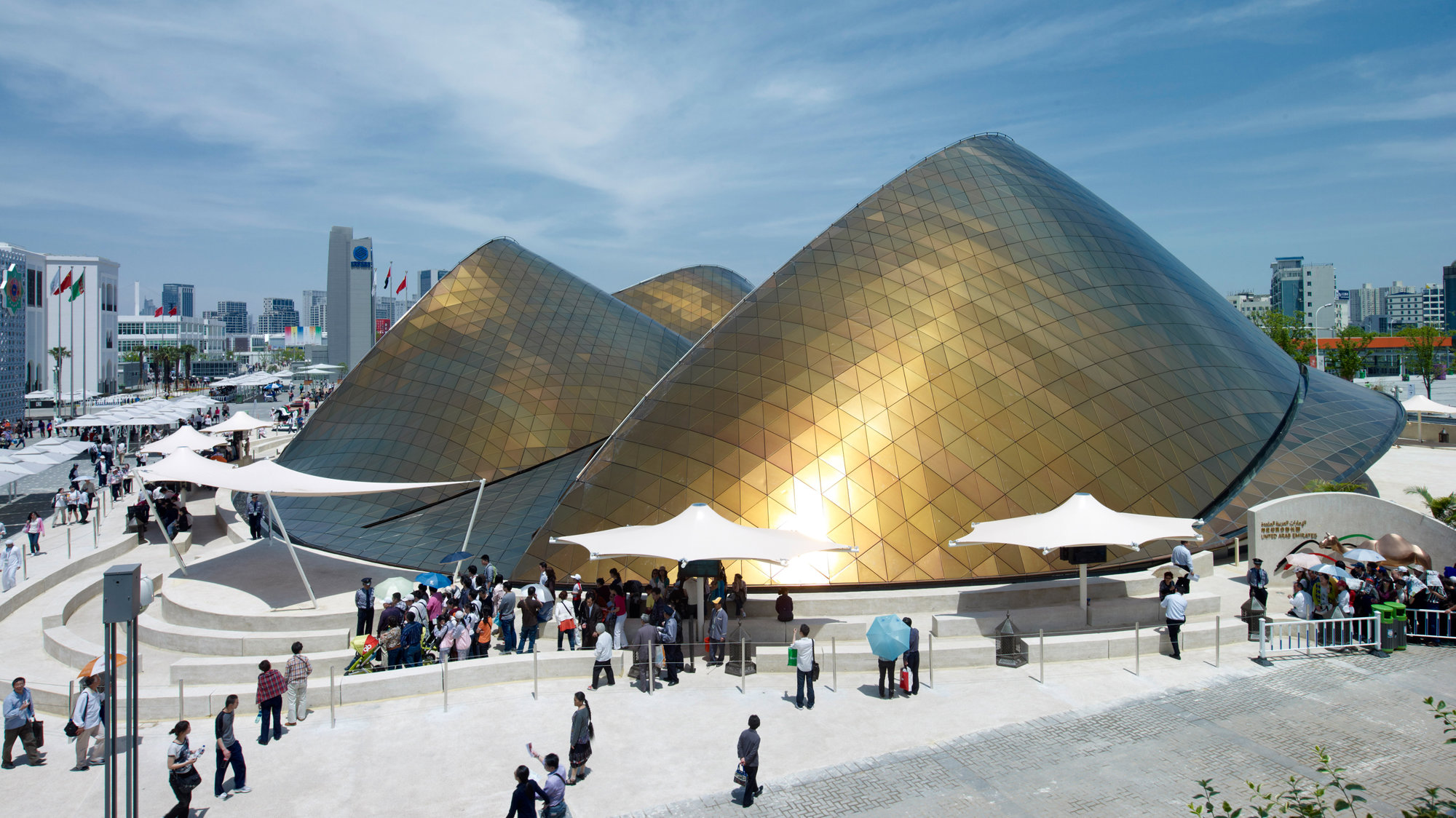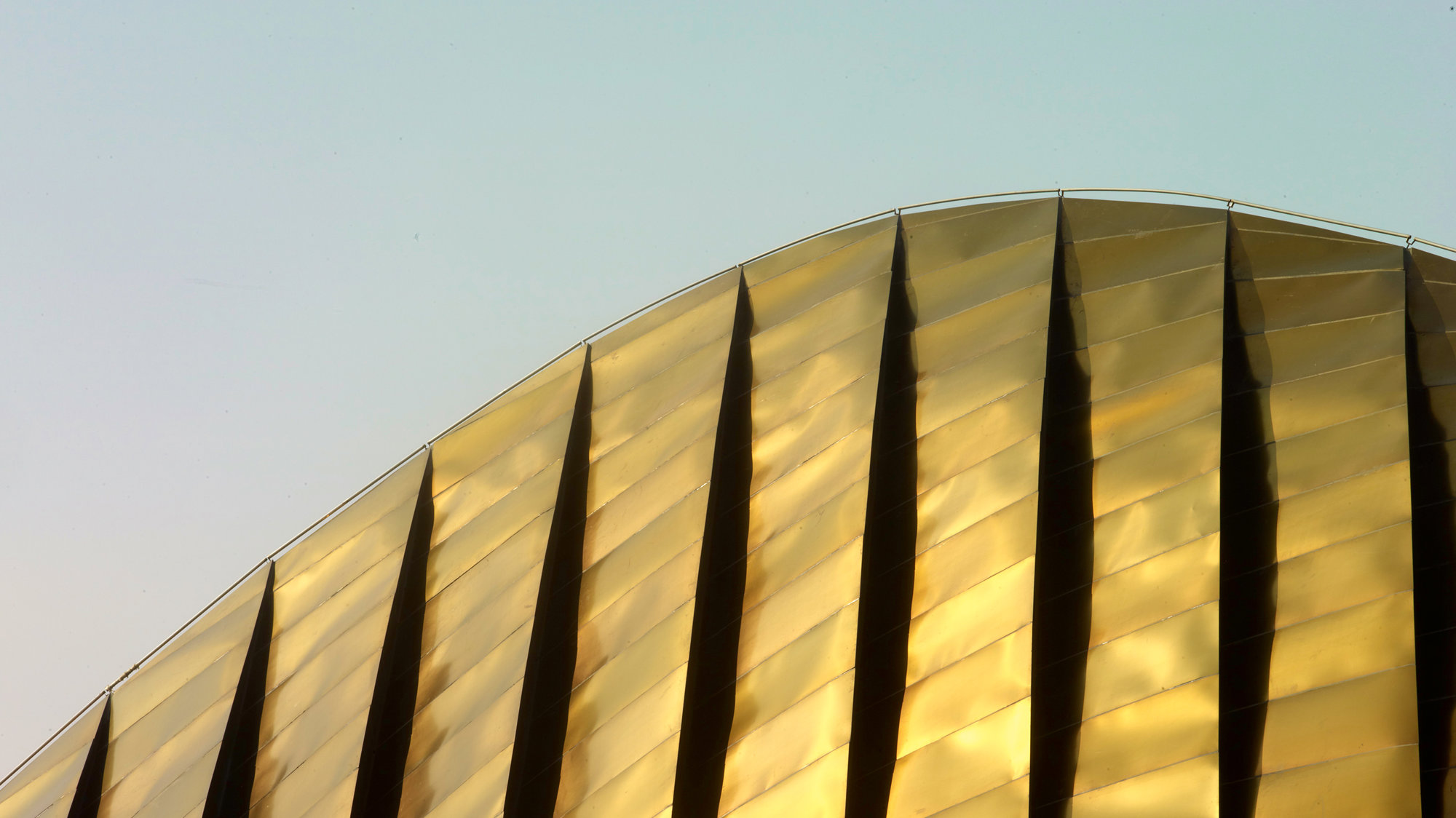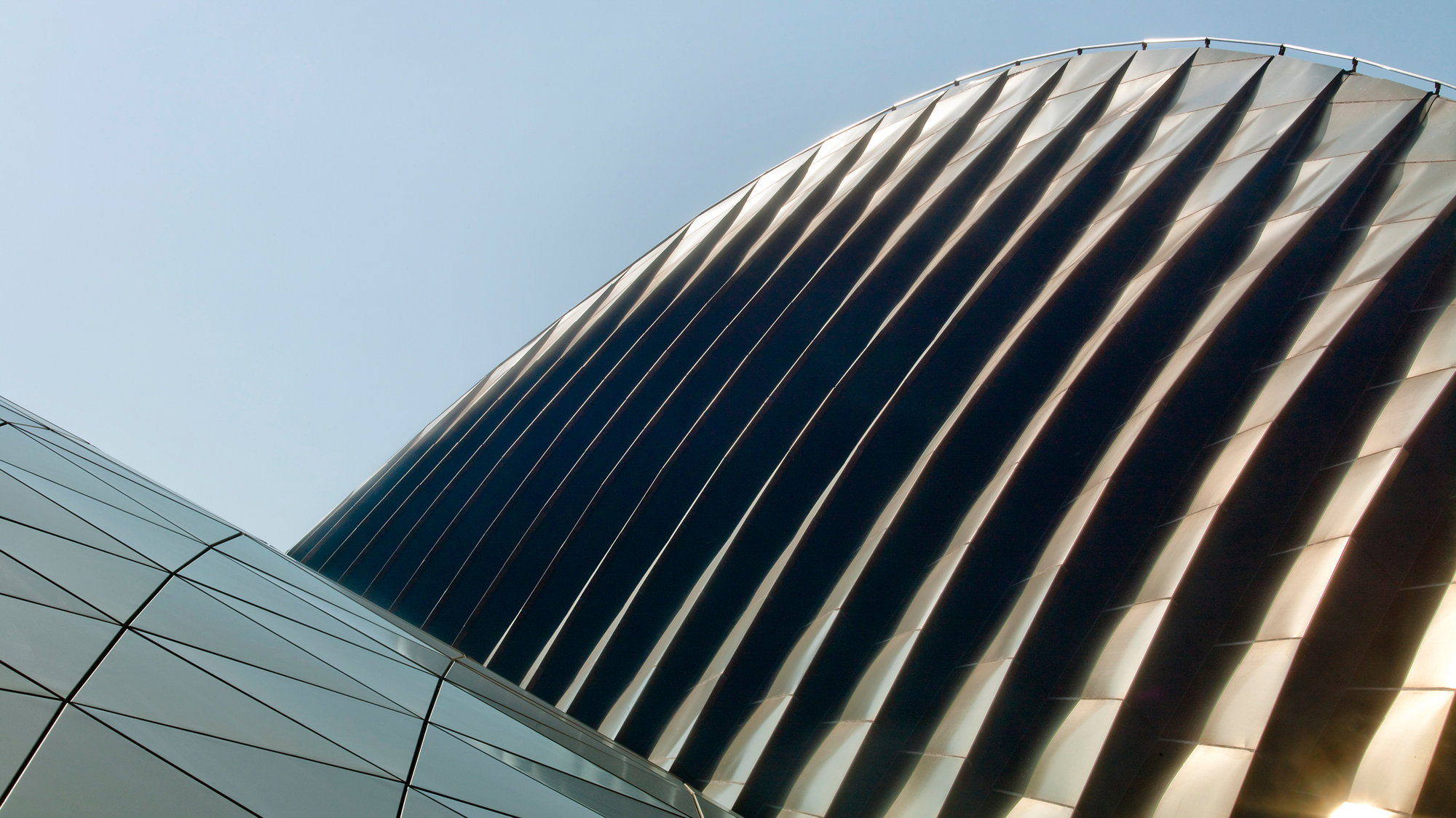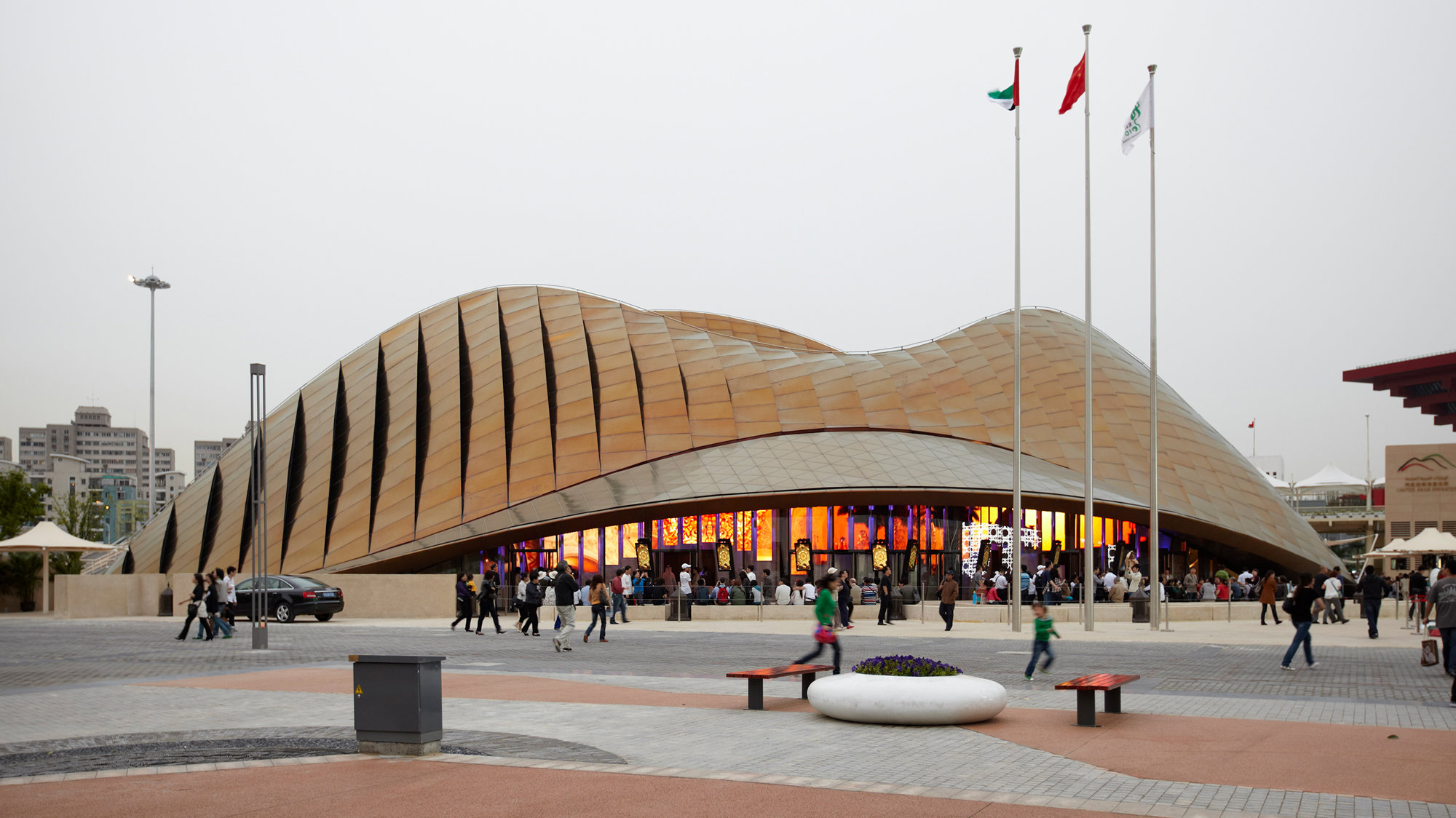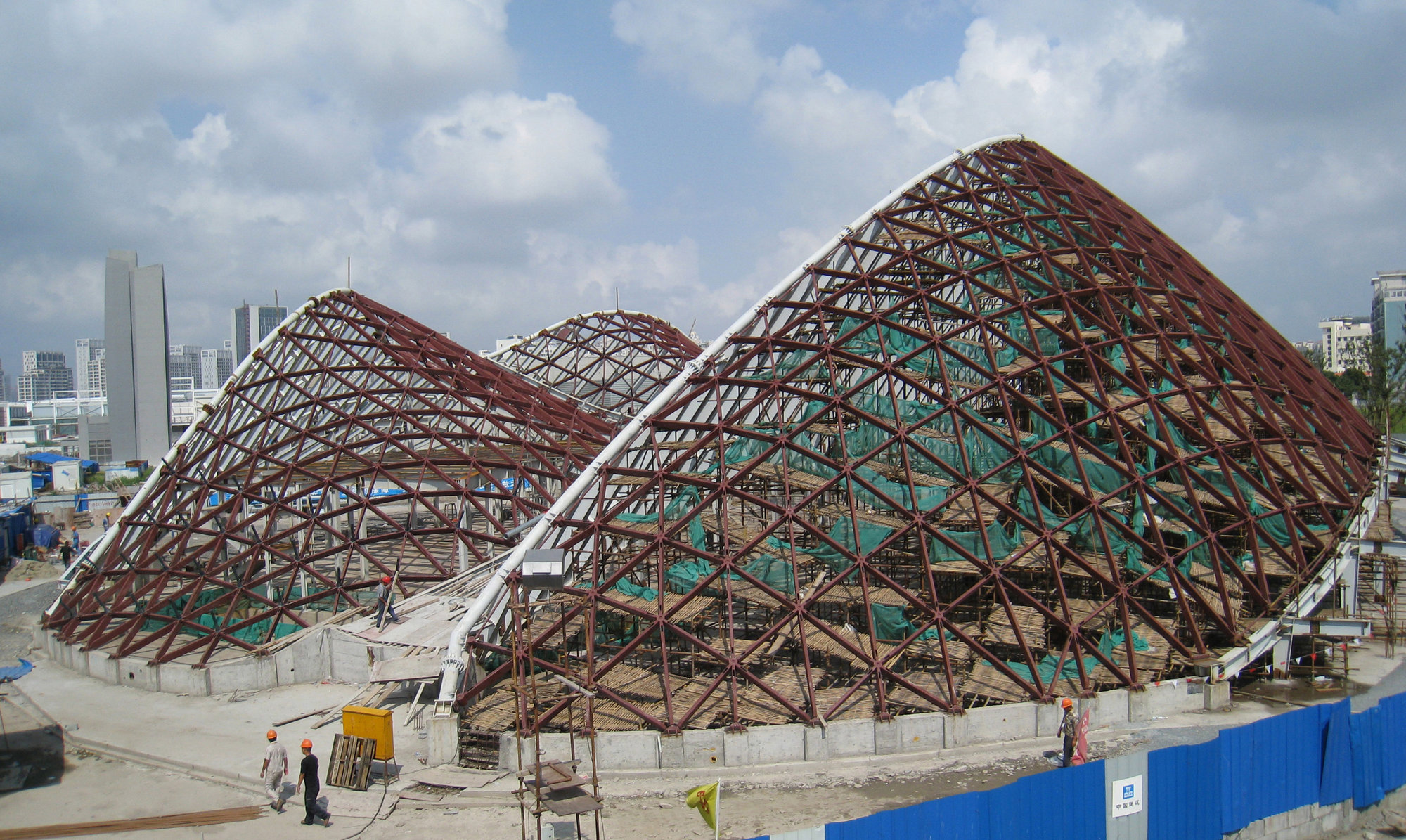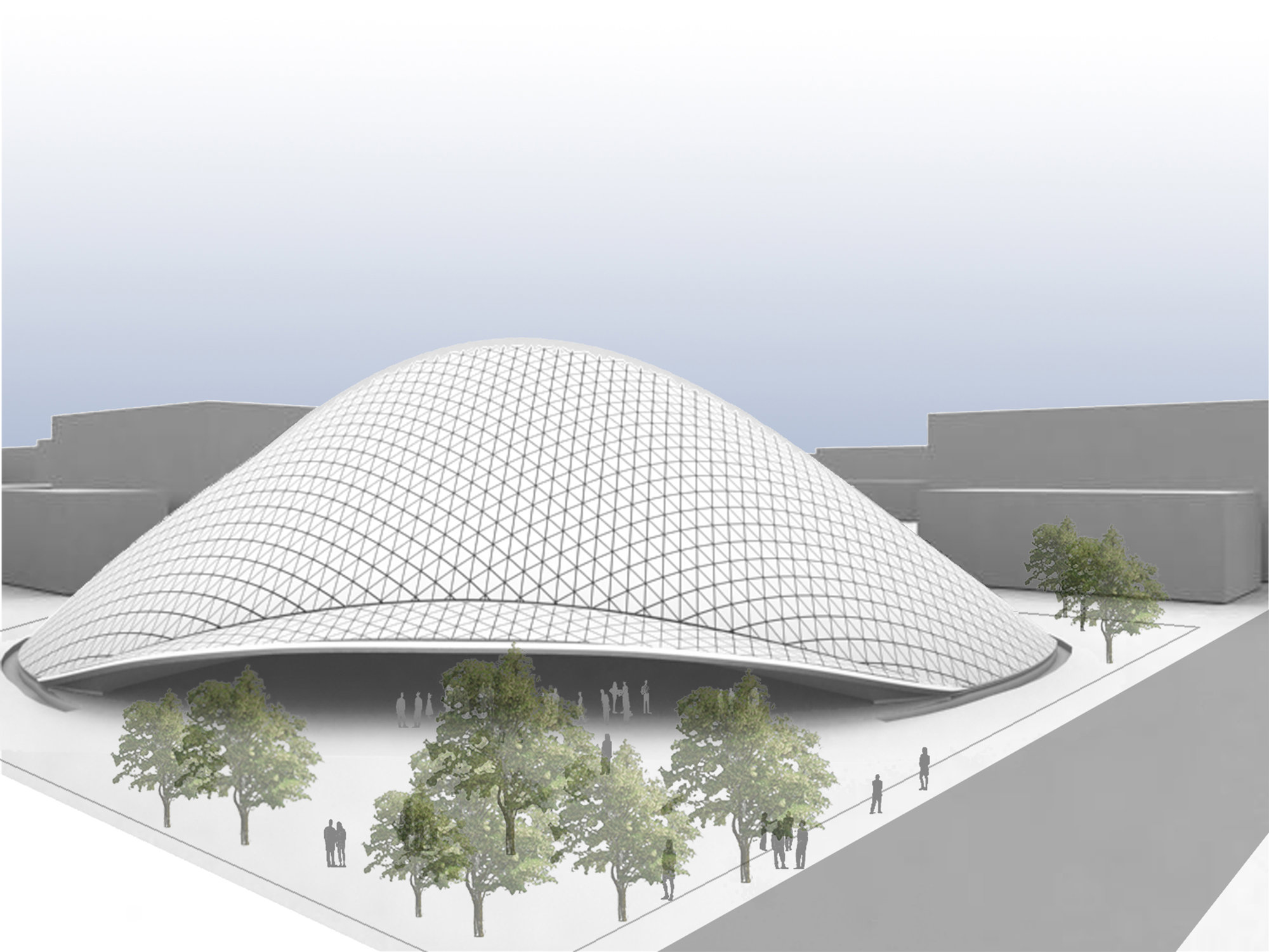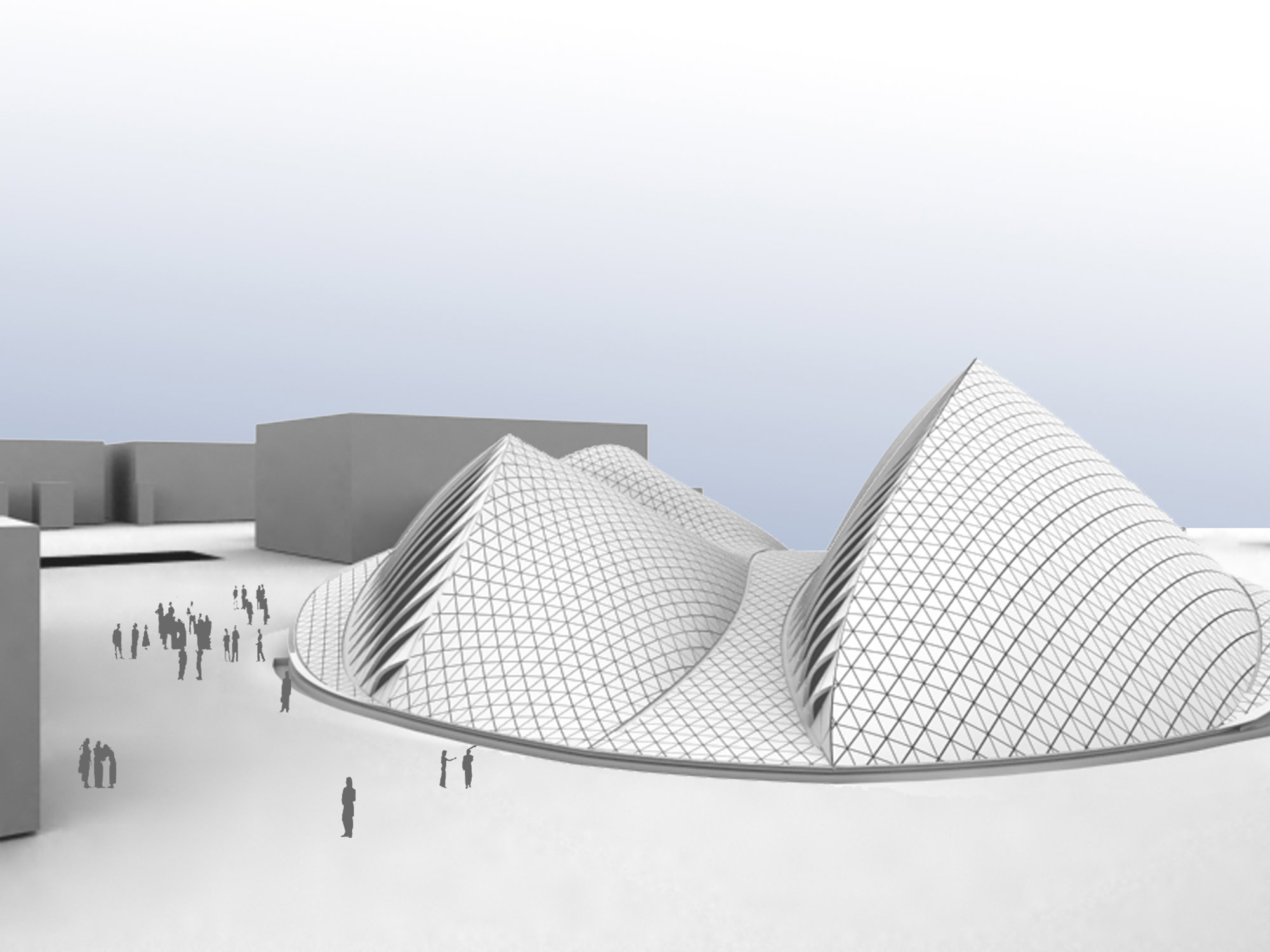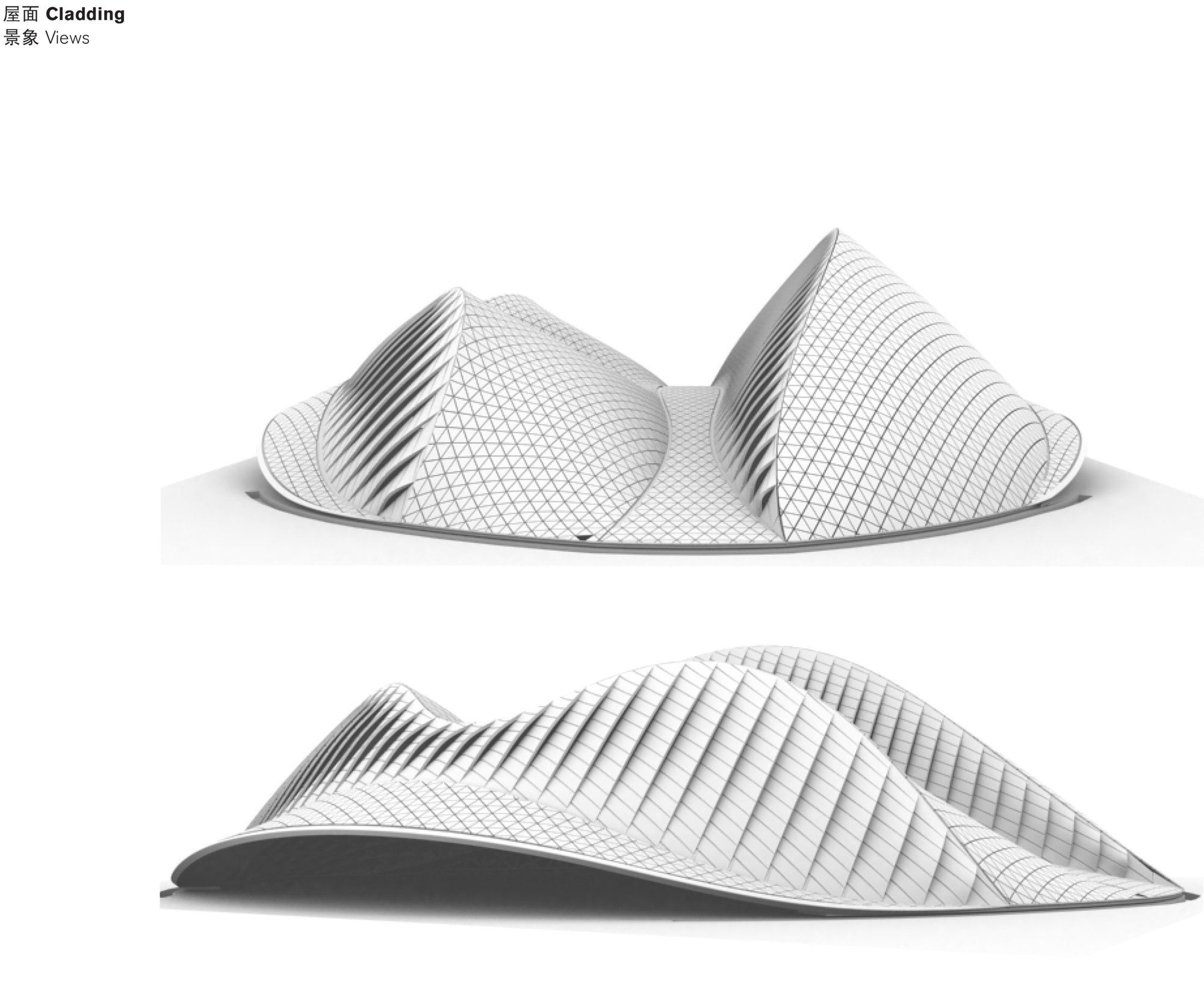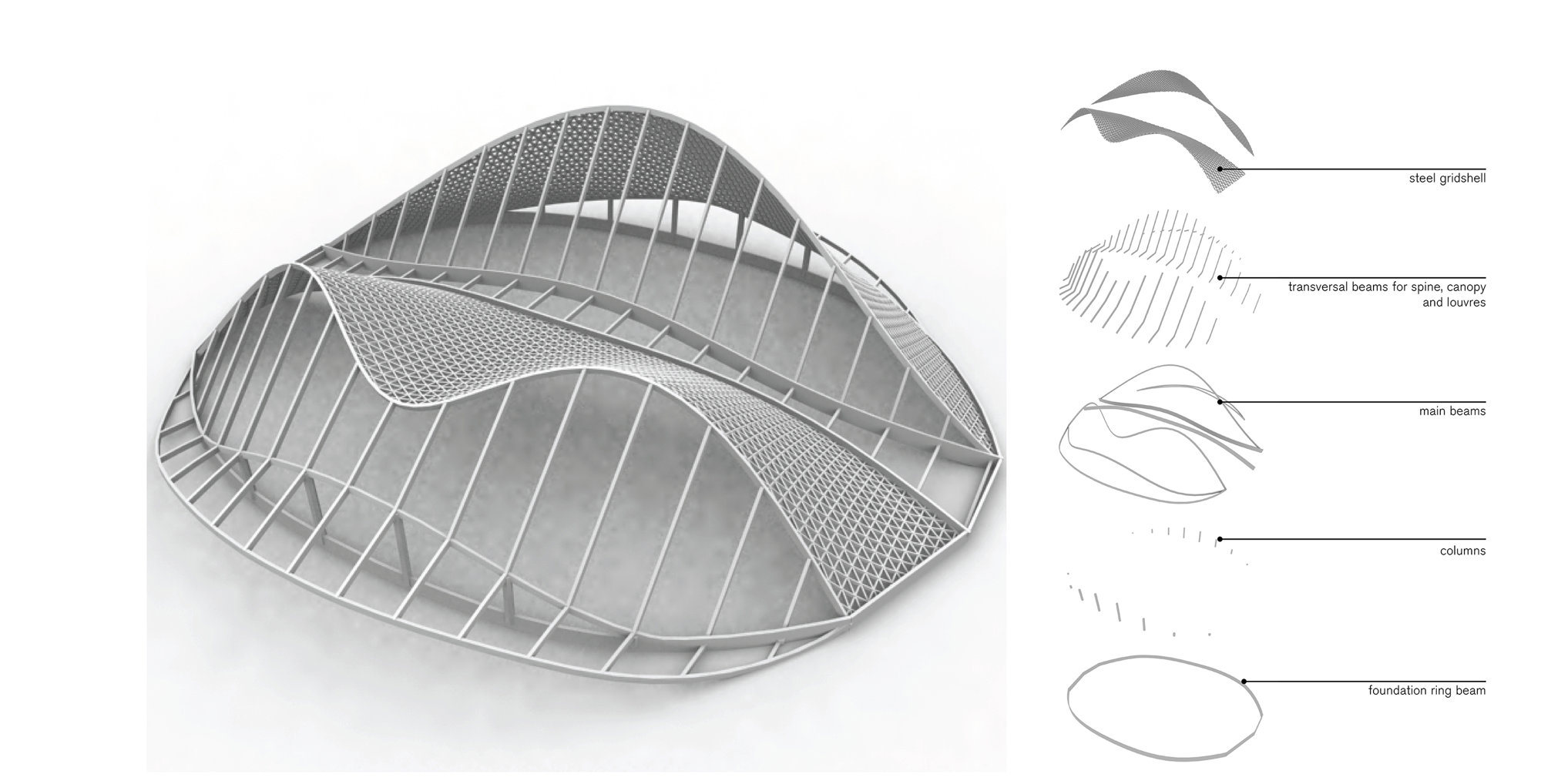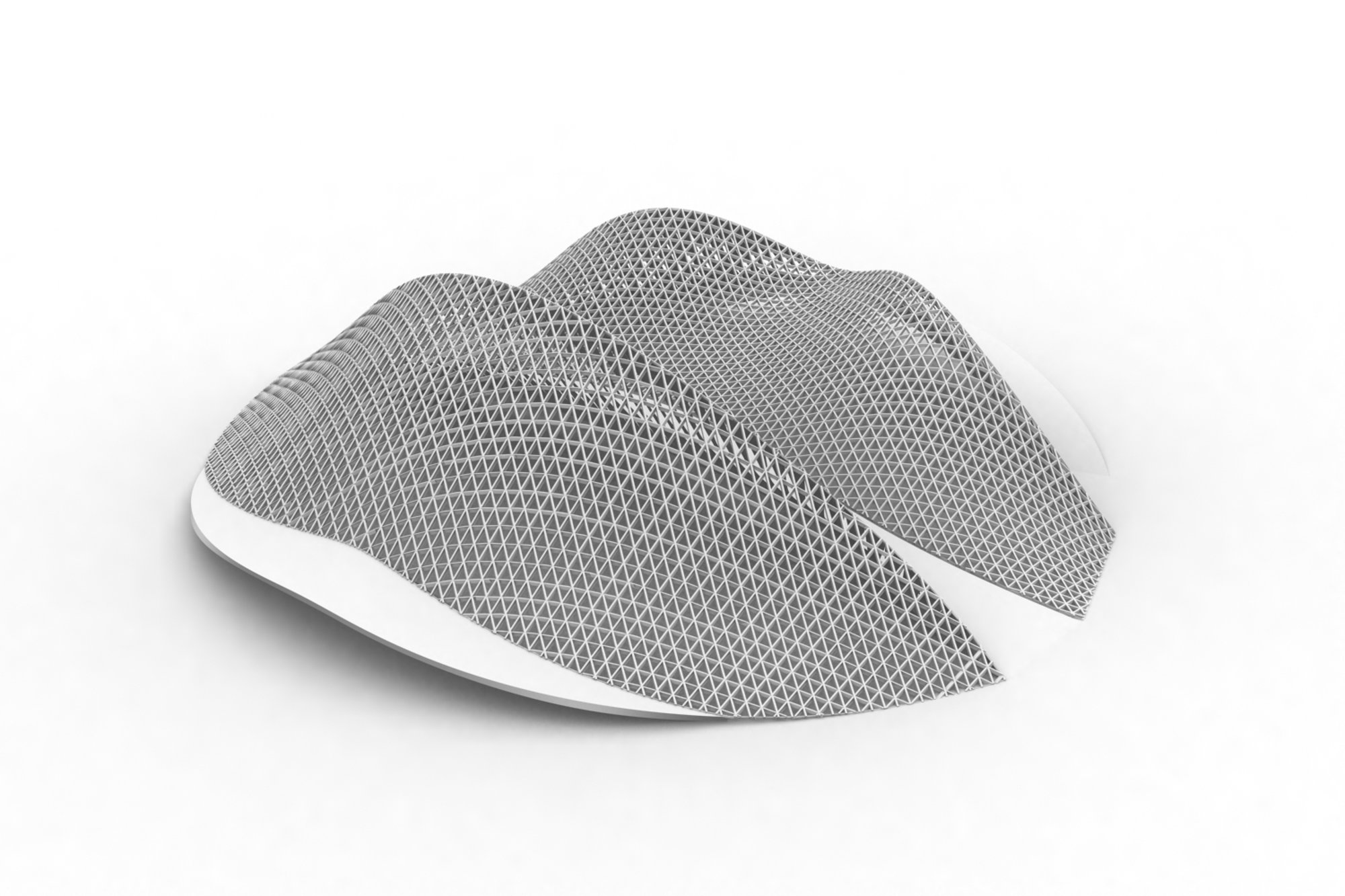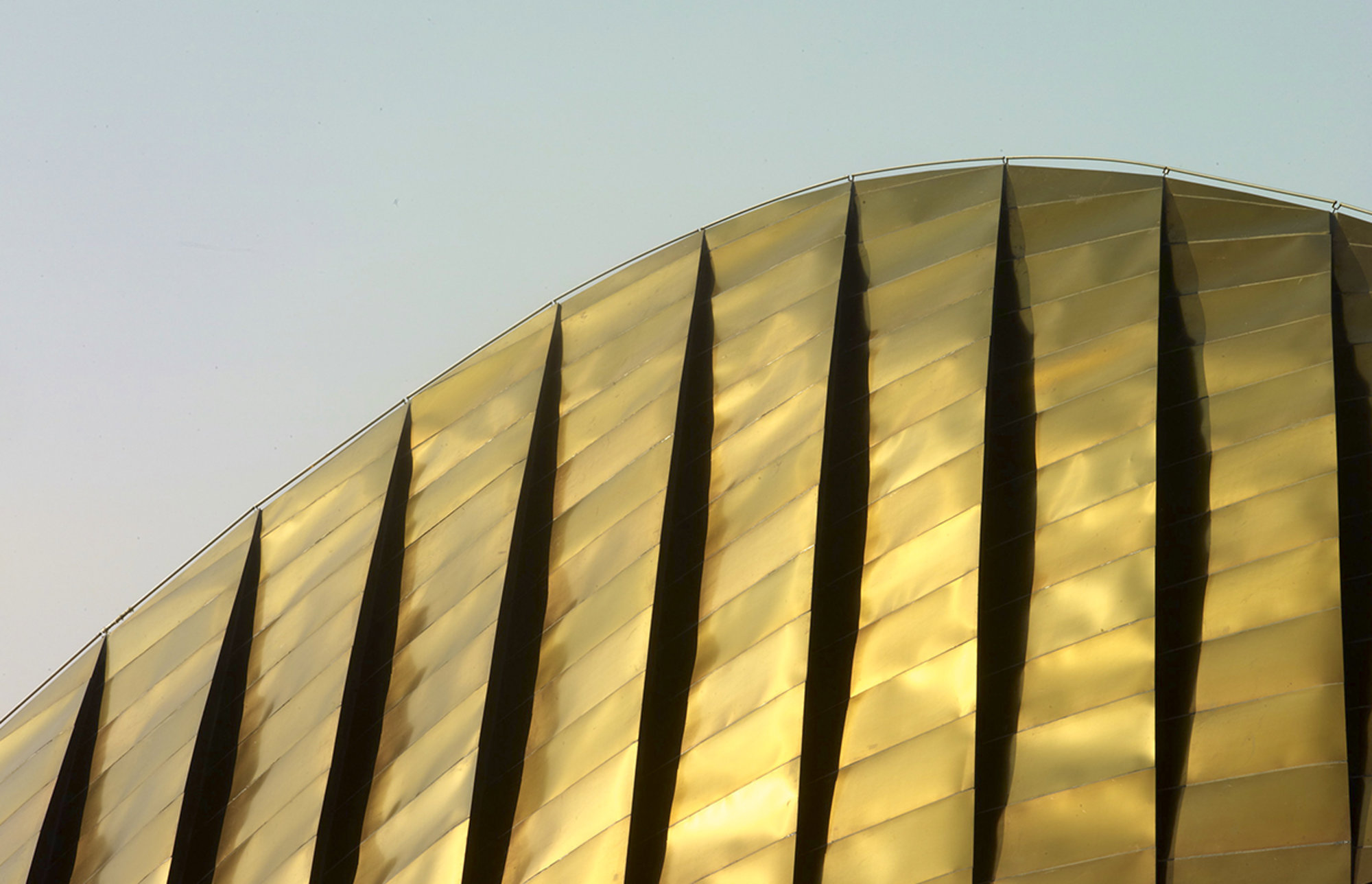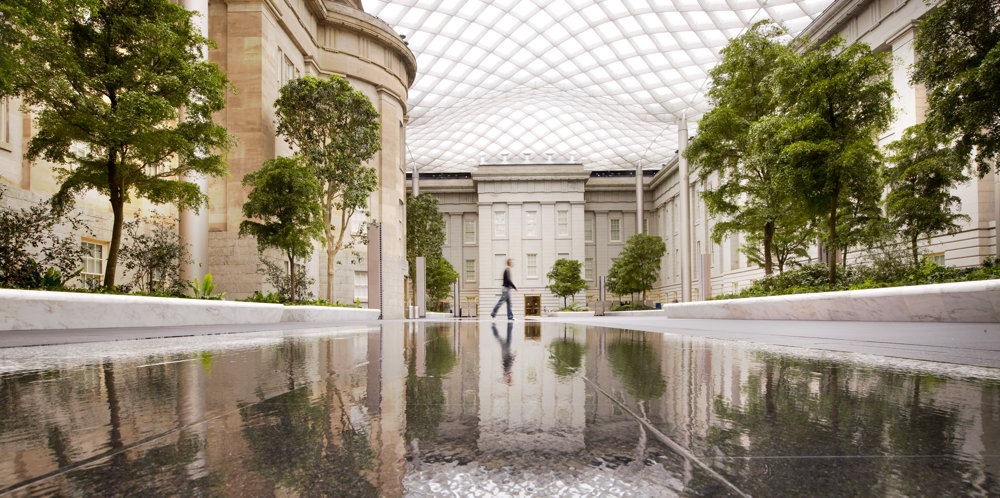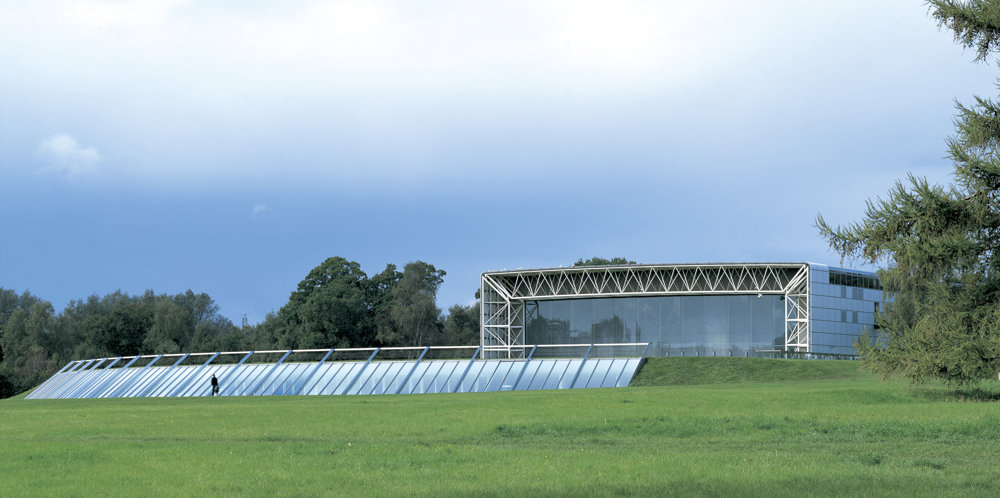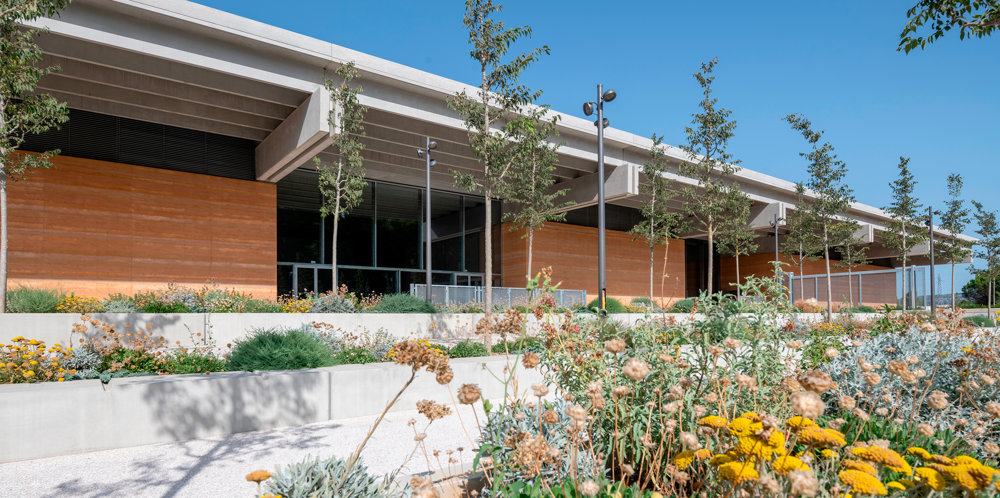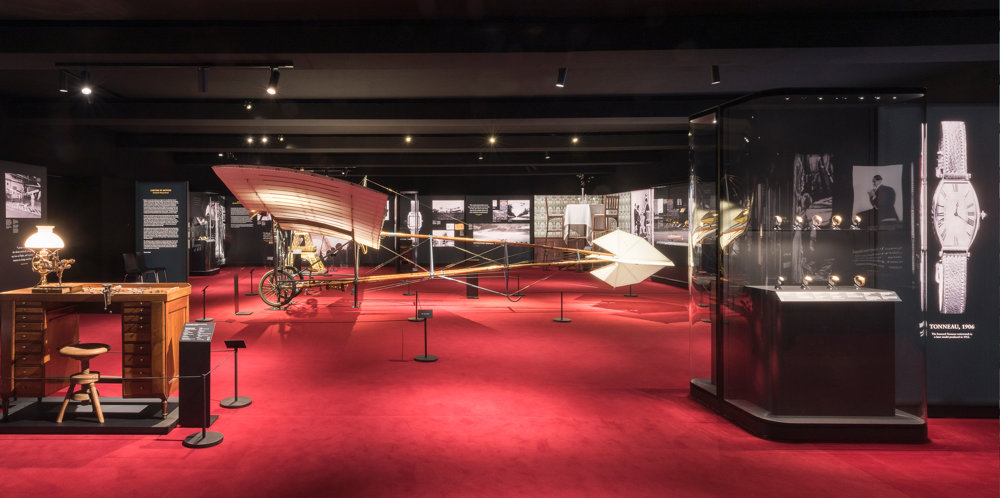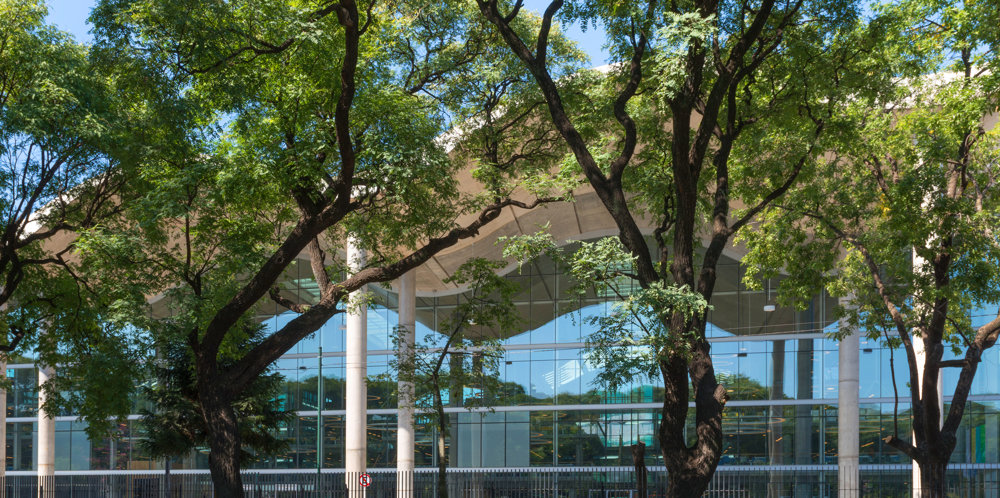The landscape and climate of the United Arab Emirates (UAE) are an elemental part of Emirati culture. The form of the UAE Pavilion for the 2010 Shanghai Expo naturally drew inspiration from the vast rolling sand dunes that are a common feature of all seven emirates. The changing light and colours of the desert were further evoked in the building's reflective skin of gold-coloured stainless steel.
Responding to the Expo's theme of 'Better Cities, Better Lives' - a recognition of the fact that more than half of the world's population now lives in cities - the pavilion provided a showcase for pioneering projects such as Masdar City, a carbon-neutral, zero-waste community in Abu Dhabi, intended to become a centre for the development of new ideas for energy production. The building itself was designed to demonstrate a number of passive environmental strategies. Shaped by changing air currents, sand dunes appear smooth on the side that bears the full force of the wind, and rough on the leeward side, where the sand collects as it is blown over the ridge. The form of the building suggested this pattern and it was oriented to deflect, and provide shelter from, the prevailing wind. The curve of the dune also responded to the arc of the sun; the north elevation being porous, with louvres to admit daylight, while the south-facing areas were solid to minimise solar gain. Lit from inside at night, the louvres glowed, illuminating the pavilion to spectacular effect
The complex shell forms, whose slopes rose to a peak of 20 metres, were cloaked in stainless-steel cladding configured on a 2-metre triangulated grid. Arched entrance canopies provided shelter for people as they queued to enter; and the pavilion was oriented to address a large public square enabling visitors waiting to enter to watch performances on an open-air stage. With a total footprint of 3,452 square metres, the building was one of the largest structures built for the Shanghai Expo - enclosing approximately 3,000 square metres of exhibition space, including a mezzanine business centre and auditoria - and was designed to be dismantled easily and relocated when the Expo ended.









